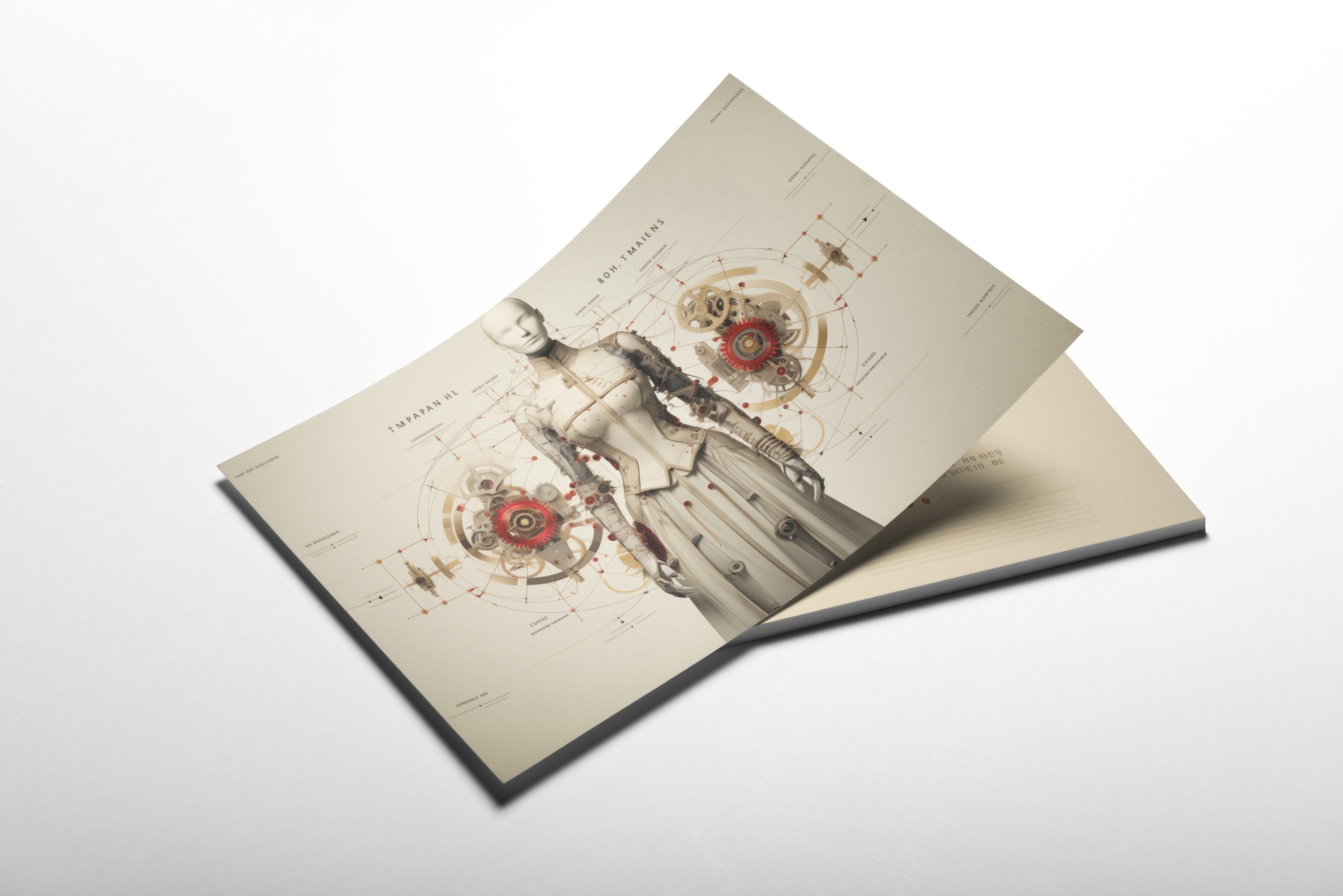Artificial Intelligence, Authentic Style: AI’s Ascendancy in Fashion
By Lizzy Bowring
As the fashion industry stands at the cusp of a transformative era, the role of Generative AI in shaping its future becomes increasingly pivotal. Gone are the days of simply marveling at technological advancements; the industry now embraces AI as a core driver of innovation and creativity. Looking ahead, the integration of AI promises not only a revolution in design aesthetics but also a leap towards more sustainable and personalized fashion experiences. This evolution signifies a paradigm shift where technology doesn’t just support creativity but actively participates in it, heralding a new age of synergistic innovation in the fashion world.
Key Takeaways
- Generative AI as a Creative Force: AI is redefining the boundaries of fashion design, blending human creativity with machine-driven innovation to produce unique, personalized aesthetics.
- Industry-Wide Adoption and Investment: A significant surge in investment and interest in AI by major fashion brands and startups reflects a growing confidence in its potential to revolutionize the industry.
- Enhanced Design and Production Capabilities: AI’s capabilities extend beyond design to material development, trend forecasting, and improving production processes, allowing creatives to focus more on the artistic aspect of fashion.
- AI in Customer Experience and Marketing: From AI-driven fashion shows to personalized shopping assistants, AI is enhancing customer engagement and revolutionizing marketing strategies in the fashion sector.
- Ethical and Sustainable AI Practices: The emphasis on ethical AI usage and its application in promoting sustainable fashion practices marks a crucial step towards responsible innovation.
- Data-Driven Decision Making: The strategic implementation of AI for analyzing consumer data and market trends is improving decision-making in product development and marketing.
- Future Prospects and Challenges: While AI presents challenges, its vast potential in areas like tackling social biases, responding to climate emergencies, and supply chain efficiencies is undeniable. The industry’s future lies in harnessing AI’s full potential responsibly and creatively.
Since 2019, technological innovation, especially in Generative AI, has been on a rapid upward trajectory.
AI in fashion is not just a trend; it’s a transformative force reshaping everything from creative design to customer experience.
The potential to reshape the fashion industry with automation, predictive analytics, and sophisticated design software creates new fashion paradigms from production to personalization. Synergizing with technology, Creativity will foster generative aesthetics where AI extends the boundaries of art and design in a blend of human and machine-driven innovation, heralding a new age in transformative and sustainable solutions.
2023 marked a watershed moment with Gen AI. Recently, McKinsey’s analysis indicated that a quarter of AI’s potential value in the industry is based on its design and product development applications, with 73% of fashion executives considering generative AI a priority for 2024. And even more indicative of AI gaining traction, AI-focused startups in fashion were funded with an investment of $14.1 billion in the first half of the year. This surge in investment, fueled by significant commitments from companies like Microsoft and Amazon, underscores the growing confidence.
Generative AI is climbing the strategic agenda of the fashion world, marking a new frontier in design and innovation.”
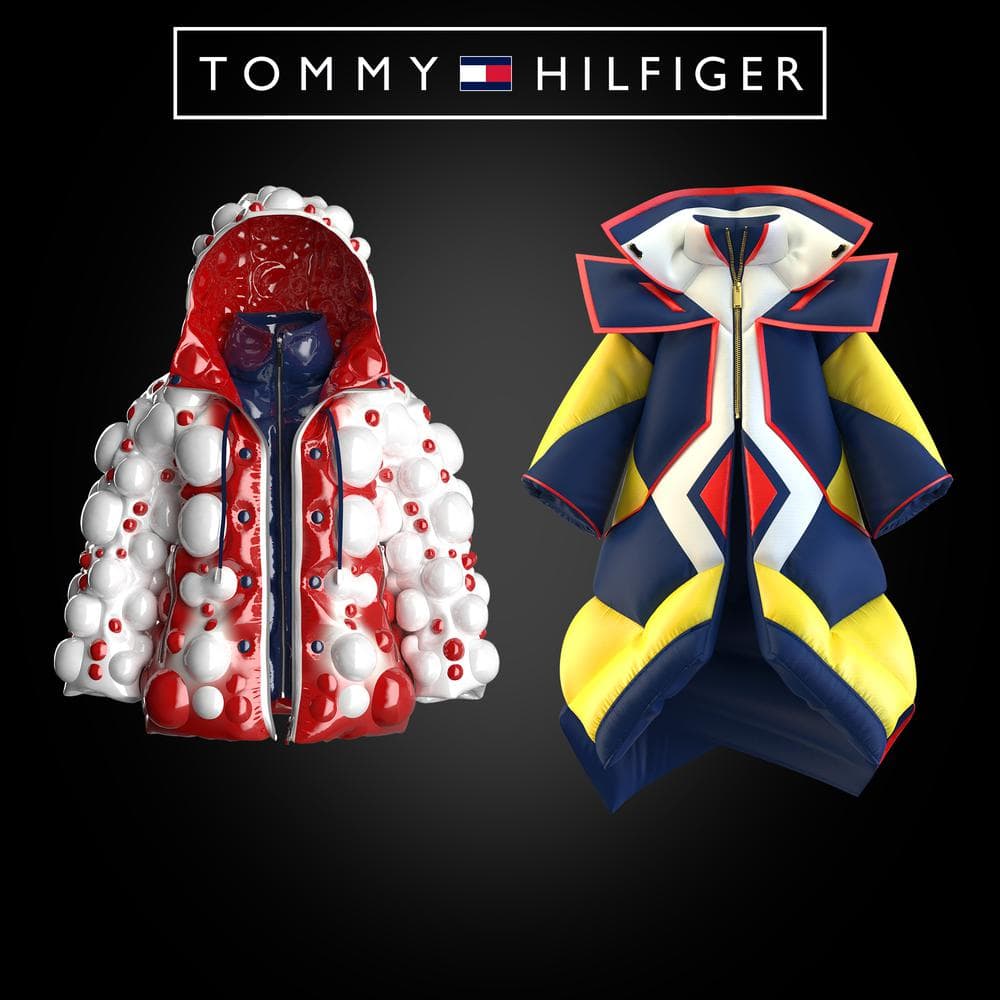
AI’s extensive and diverse application in fashion is already evident but sets the premise for the future. In partnership with IBM and the Fashion Institute of Technology, Tommy Hilfiger used AI tools to analyze various data on the fashion industry to identify upcoming trends. This collaboration enabled Tommy Hilfiger to design a trend-forward and commercially successful collection. AI will advance the development of materials and design and provide a valuable tool that allows creatives to spend more time on design.
AI is the new oracle of fashion, predicting trends and guiding design with unprecedented precision.
AI in fashion shows represents a growing trend where technology and Creativity intersect to create new and immersive experiences. Ganni’s AI integration in their runway show illustrates AI’s broad creative possibilities. In collaboration with interactive tech artist Cecilie Waagner Falkenstrøm and her studio ARTificial Mind, Ganni developed a concept that placed AI at the core of their runway presentation. The AI, named “Ganni AI Girl,” was created using information from the Ganni community and the brand’s history. The AI was embodied not visually but through a voice emanating from the trees along the runway, interacting with models as they walked, adding an innovative dimension to the show. This approach blends technology with a natural element, creating a distinct runway experience.
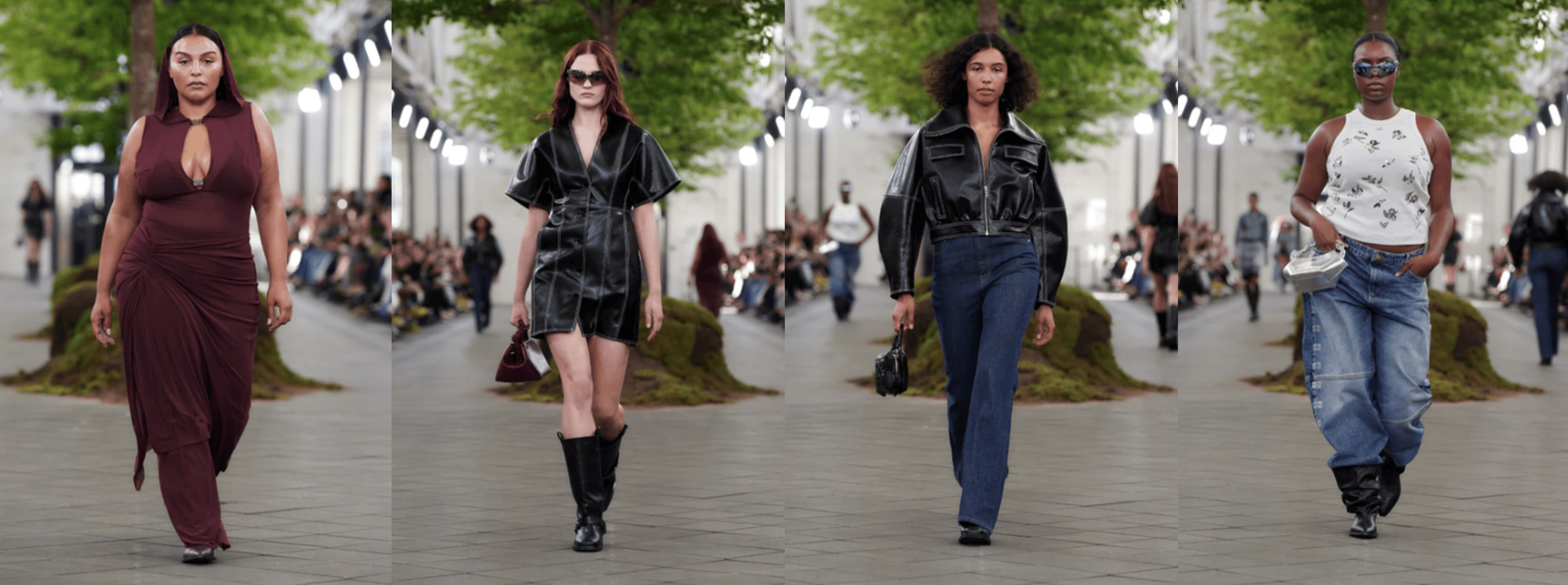
Online retailers like Zalando have enhanced the customer experience with AI-powered shopping assistants, personalized shopping recommendations, and optimized logistics and inventory management. Their AI-driven approach has been instrumental in scaling up their business and providing a more tailored shopping experience, leading to increased customer retention and sales. Apparel retailer Stitch Fix experimented with AI models GPT-3 and DALL-E 2 to improve styling services. These AI tools helped stylists quickly and accurately interpret customer feedback and curate products that were more likely to be purchased. Fitness bands that track heart rates, motion, and performance are examples of AI-powered wearables already on the market. These devices use AI to provide tailored feedback and insights based on the wearer’s activity.
Luxury brands are not just selling products; they are selling AI-crafted experiences.
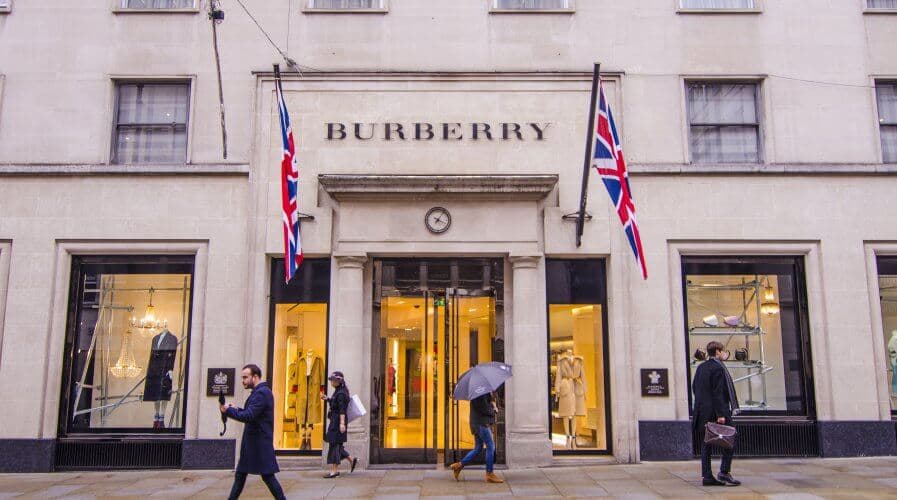
In the luxury fashion sector, several brands have begun to embrace Gen AI to enhance various aspects of their business. Burberry has been at the forefront of integrating AI and data analytics into its business strategy. They use AI for customer insights, personalized marketing, and enhancing the shopping experience both online and in-store. By leveraging AI, Burberry has offered its customers more personalized experiences. Balmain has used AI in its marketing strategies, notably creating virtual models and digital worlds. Balmain’s AI-driven digital campaigns enhance brand visibility and appeal, especially among the tech-savvy and younger consumer base.
Gucci’s AI initiatives have contributed to a more streamlined supply chain and inventory management, reducing waste and improving product availability.
Additionally, their AI-driven design experiments have kept the brand at the cutting edge of fashion innovation with the experiential. Gucci offered an AI-based interactive and experiential exhibition called Gucci Sensorium. The Exhibition, designed in collaboration with H-FARM, explored the borders between AI and human emotions. It was an immersive and interactive space of six installations dedicated to specific emotions of love, empathy, and fear to show how intelligent technology can measure or amplify the senses. Gucci has also used emerging technologies and digital marketing tools such as AR, VR, and Chatbots to create digital content.
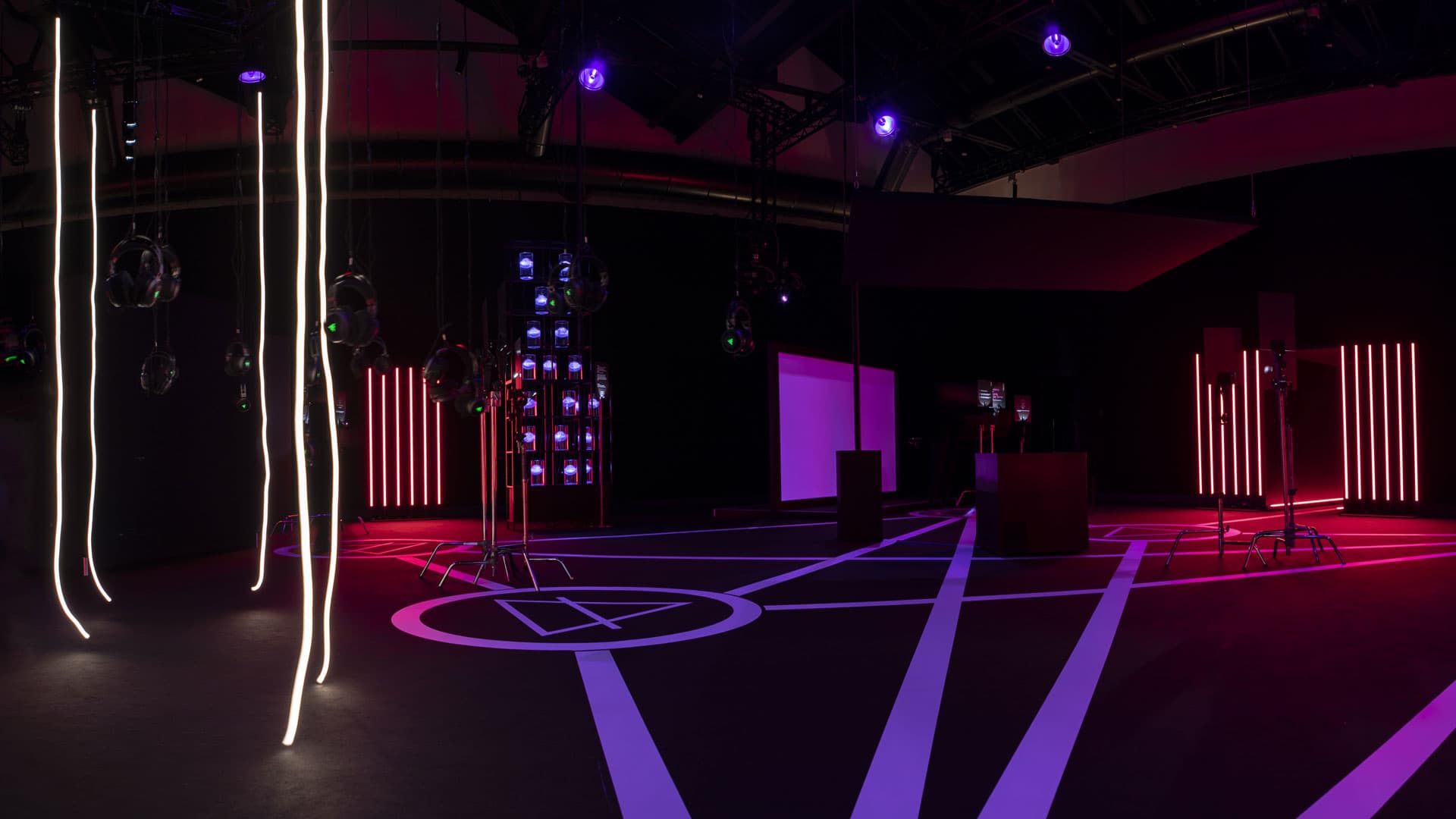
Balenciaga introduced an innovative concept in fashion and technology, merging wearable technology with music. In a unique collaboration with the British musical group Archive, Balenciaga has launched a series of exclusive merchandise, including T-shirts and hoodies, which feature an embedded NFC (Near-Field Communication) chip. This chip gives wearers exclusive access to a particular “Patterns” music track explicitly composed for Balenciaga Music.
AI-driven innovation unlocks new realms of Creativity, leading to more personalized and inventive products, including the emergence of virtual worlds and gaming, revolutionizing how brands engage in tech, particularly in virtual environments.
These examples demonstrate how Gen AI can be effectively used for design and trend analysis, customer service, and personalized shopping experiences, enhancing their operational efficiency, customer engagement, and market responsiveness.
There are other realms within which brands can evolve by extending the experiential. The popularity of high fantasy, sci-fi, and other forms of speculative fiction in media and entertainment will reflect a desire for dreamlike escapist experiences, evident in the rise of immersive virtual reality, which can create new, dreamlike worlds for users to explore – Zelda, and Tears of the Kingdom. Or just simple ‘play’ in real-time can evoke a vital part of a healthy lifestyle, fostering social connections, promoting problem-solving, stimulating Creativity, and providing a means for relaxation and stress relief. The benefits of ‘play’ for the human psyche illustrate its central role in our mental and emotional well-being, and consequently, we will see a rise in games and outdoor activities. Additionally, Astrobiology and Visionary Perception, driven by AR and VR technologies, are shifting our experiential boundaries, redefining concepts of value and ownership in the digital realm, as seen in the rise of NFTs and Web3.
While AI presents particular challenges, its vast potential is undeniable – tackling social biases, responding to climate emergencies, and improving supply chain efficiencies.
Understanding AI’s varied abilities is crucial for responsible, safe, sustainable investment and engagement, and when handled correctly, it can provide vast improvements for the creative industry.
When AI synergizes with human Creativity, it will push the boundaries of art and design, spearheading a new era of innovation in fashion.
Action Points
- Embrace Gen AI for Enhanced Creativity and Innovation: Invest in training for design teams to integrate Gen AI into design and product development processes. Focus on enhancing creative capabilities, speeding up production, and innovating personalized products. Support this with a commitment to ongoing research and development in AI technologies to maintain a competitive edge in AI applications.
- Leverage AI for Marketing Excellence and Customer Engagement: Utilize Gen AI to revolutionize marketing strategies and customer service. Deploy AI-powered chatbots for personalized assistance, tailor targeted marketing campaigns, and create immersive virtual realities for exceptional customer experiences. Extend this by exploring collaborations with tech companies, digital artists, and designers to expand the brand’s reach into new digital markets and platforms.
- Commit to Sustainable and Ethical AI Practices: Apply AI to promote sustainable fashion practices, such as efficient supply chain management and demand forecasting to minimize waste. Investigate sustainable materials to align with global sustainability goals. Establish clear ethical guidelines for AI usage, focusing on transparency, data privacy, and fairness. Engage with consumers and stakeholders in open dialogues to build trust and ensure responsible AI adoption.
- Adopt a Data-Driven Approach for Strategic Decision-Making: Implement systems to meticulously collect, analyse, and leverage consumer data and market trends through AI algorithms. Enhance decision-making in product development, inventory management, and marketing strategies, ensuring accurate and relevant data insights inform every choice.
